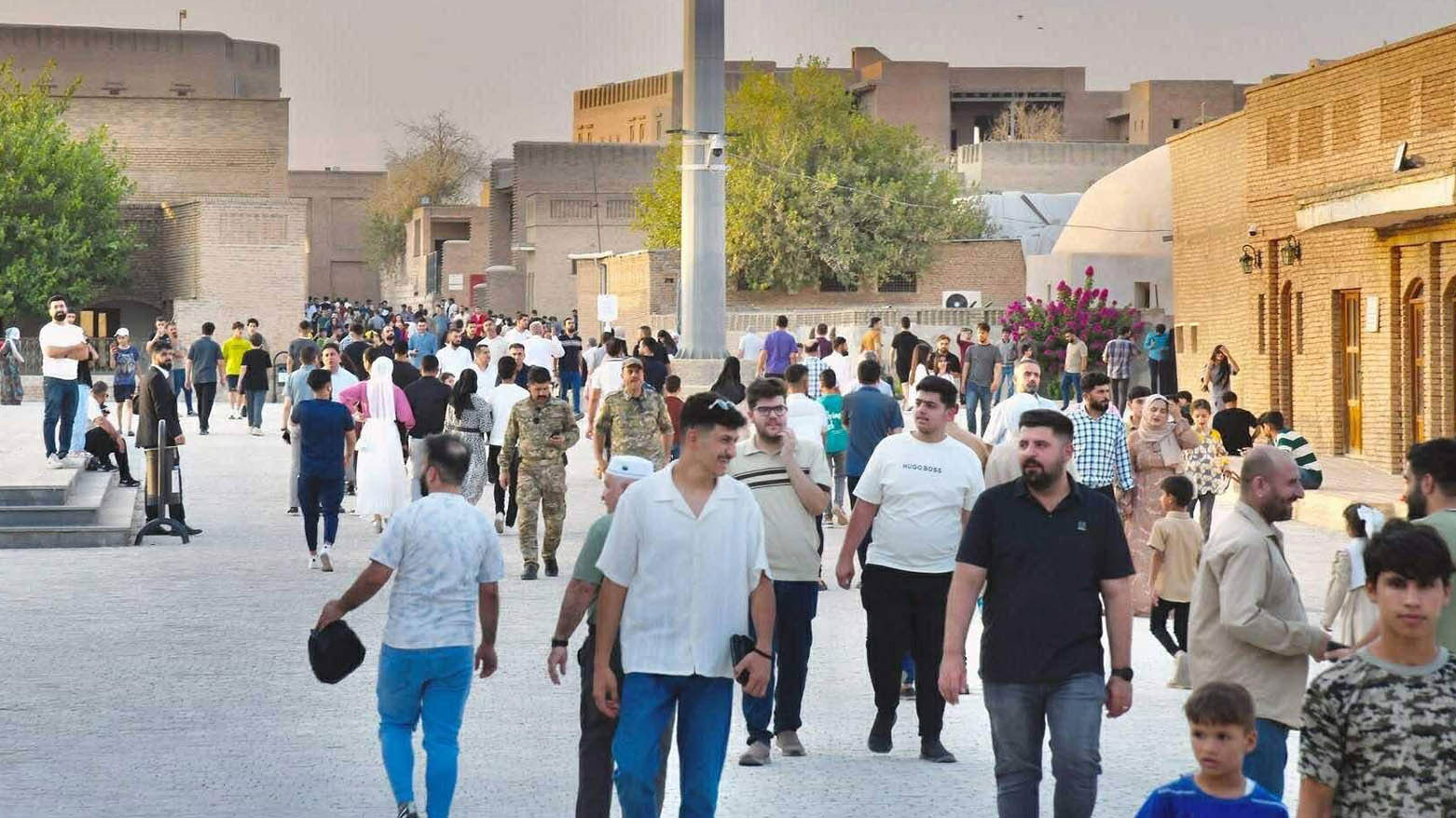Erbil Citadel Draws Over 3,000 Visitors in Three-Hour Trial Opening Amid Restoration Push
A trial opening of the Erbil Citadel drew 3,000+ visitors in 3 hours, reflecting massive public interest as a major restoration project nears key milestones, including the return of ancestral families. Officials are planning for a full, managed reopening of the ancient site.

ERBIL (Kurdistan24) – A brief, unannounced opening of the historic Erbil Citadel attracted more than three thousand tourists and citizens in just three hours, a massive turnout that the head of the site’s revitalization commission says demonstrates a great public desire for the ancient landmark to be permanently reopened.
Falah Hassan, the head of the High Commission for Erbil Citadel Revitalization, detailed the results of the successful trial in a statement to the Kurdistan24 website on Saturday.
"Although we did not issue any prior notice, after we had done extensive renovation work, a few days ago we opened the gate of the historic Erbil Citadel to citizens and tourists for a period of three hours," Hassan said. "At that time, it became clear to us that more than three thousand citizens and tourists had come to the Citadel, and they were all pleased with the renovation work that had been done."
The commission used the opportunity to gauge public opinion on the future of the UNESCO World Heritage site. "With the arrival of tourists and citizens, we conducted a survey," Hassan explained. "According to the survey, the majority prefer the Citadel's gate to be open at night, and also for Friday prayers to be held in the mosque."
Based on the experience, officials have identified several key requirements that must be addressed before a full reopening can occur.
Hassan announced that logistical improvements are needed to manage the expected high volume of visitors.
These include better maintenance of cleanliness by placing more trash cans, installing multilingual warning signs and notices for visitors, implementing a more robust monitoring system, and increasing the lighting in all of the Citadel's streets and alleys.
In an effort to make the site more family-friendly, Hassan indicated that a dedicated children's play area, to be called the "Children's Plaza," will be prepared urgently so that younger visitors can have a good time.
He also stressed the importance of further trial openings to gather more data, stating, "We need to open the Citadel's gate to citizens several more times, on days other than Friday and at different times."
He noted with satisfaction the public’s responsible behavior during the initial opening, adding, "In the first step when we opened the gate, the citizens maintained a very high level of cleanliness, which is gratifying."
Further plans pointed to by the commission head include opening a special museum to house artifacts discovered within the Citadel itself and implementing a policy to prevent cars from coming onto the site, with exceptions only for authorized vehicles.
This surge in public interest and the plans for reopening come amid significant, visible progress in the citadel's comprehensive restoration, which aims to revive it as a living neighborhood.
On May 30, 2025, and three weeks after a symbolic partial lighting, a fuller ring of restored structures glowed nightly with a warm, amber light. Falah Hassan confirmed that the latest phase included the completion of external façades on nearly 80% of the perimeter houses. "This isn’t just lighting up stone; it’s the rekindling of memory and identity," he told Kurdistan24. "We are close to welcoming the first Kurdish families back into their ancestral homes by the end of this year."
Hassan also acknowledged the critical role of government support, telling Kurdistan24 English, “We are grateful for Prime Minister Masrour Barzani’s decision to transfer the Commission from the authority of the Erbil Governorate to the jurisdiction of the Council of Ministers under his direct supervision — a move that has greatly facilitated the restoration process.”
The gradual reactivation of residential life is a cornerstone of the project, with a short-listing process underway for Erbil families with direct historical ties to the site.
Among the most ambitious ongoing efforts is the interior renovation of the Grand Mosque, whose reopening is expected to coincide with the return of residents.
UNESCO, which inscribed the site on its World Heritage List in 2014, recently dispatched an expert mission to evaluate the progress, with preliminary assessments indicating the project is on track with international conservation standards.
The immense public interest is directed at one of the world's most significant historical sites.
The Erbil Citadel, a prominent urban landmark, is considered one of the oldest continuously inhabited places on earth, with life having continued within its walls for more than 6,000 years.
Historical documents and archaeological evidence indicate the presence of Sumerian, Akkadian, Babylonian, Assyrian, Persian, Greek, Islamic, and Ottoman civilizations throughout its long history.
The citadel is situated atop a large mound, rising 28-32 meters above the surrounding city plain. The oval-shaped town has a longer diameter of 430 meters and a shorter one of 340 meters, with a dense urban fabric composed of a complex network of narrow, winding alleys and traditional courtyard houses.
Its interior contains a rich tapestry of structures, including guest houses (diwankhanas), Sufi lodges (tekkes), public buildings, hammams, and mosques, divided into three main quarters: Saray, Tekiye, and Topkhane.
One of its most distinctive features is its solid and continuous outer fortification wall. Historically, access was controlled through two main gateways: the great Southern Gateway and the great Northern Gateway.
